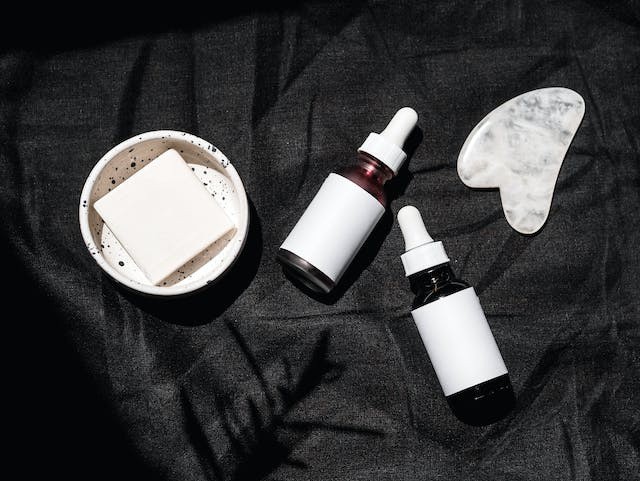
A woman who wished to address the pigmentation on her skin ended up with a worse condition due to the lightening cream she used. The product contained a bleaching agent that turned her face into bluish-brown.
Skin-Lightening Cream Turns A Woman's Face Into Bluish Brown
A 55-year-old woman from India applied skin-lightening cream with skin-bleaching agent hydroquinone on her cheeks to treat hyperpigmentation or melasma. However, those regions on her face turned blue-brown. The woman ended up with a condition called exogenous ochronosis.
According to a new study, "ochronosis" is a hyperpigmentation disorder due to the accumulation of ochre-colored deposits in tissue, while "exogenous" means it is related to the use of skin-lightening agents.
"On physical examination, bluish-brown patches with background erythema [skin reddening] and telangiectasias [widened blood vessels] were observed on the cheeks, nasal bridge, and perioral region [around the mouth], with lesser involvement on the forehead," said Nikita Patel and Hiral Shah, of Government Medical College Baroda.
Exogenous ochronosis is dermatitis brought on by applying hydroquinone or phenols to the skin. Under a microscope, the condition's affected skin appears yellowish-ochre, but because of light scattering, it appears blue-brown to the unaided eye.
Because of its possible adverse effects, hydroquinone has been prohibited from being used in cosmetic creams in the European Union since 2000.
The FDA almost outlawed the drug in 2006. Japan is one of the biggest markets for skin-lightening products purchased annually by about 10 to 15 million people globally.
Exogenous ochronosis can occur when hydroquinone is used for an extended period, particularly in body parts exposed to sunlight. Since most treatments are preventative, they cannot be easy to eradicate. Several research studies have suggested a Q-switched alexandrite (755 nm) laser as a potential treatment for the illness.
Treatment for exogenous ochronosis is difficult, and it might not be reversible. The patient received counseling about the value of photoprotection and how to stop using the skin cream. Additionally, retinoid gel and a topical emollient were recommended.
What Is Hydroquinone?
Hydroquinone is an agent that lightens skin, which is why it has been used to treat many types of hyperpigmentation. There has been significant debate in the past regarding the safety of hydroquinone. 1982 saw the U.S.
The Food and Drug Administration had approved the substance as safe and efficient. A few years later, due to safety concerns, merchants removed hydroquinone from the market. The FDA later learned that mercury and other pollutants were present in many items above. They proved that these pollutants caused claims of negative effects.
Hydroquinone makes the skin lighter because it reduces the amount of melanocytes in it. Your skin tone is associated with melanin, which is produced by melanocytes.
Because melanocyte production is up in hyperpigmentation situations, more melanin is present. Over time, you can manage these melanocytes to achieve a more equal skin tone.
There are a few exceptions to the usual well-tolerated range for hydroquinone. Hydroquinone may exacerbate dryness or irritation if you have sensitive or dry skin. When your skin becomes used to the substance, this stops typically happening. Normal or oily skin types are less likely to encounter these adverse effects.
Additionally, on fair skin tones, the substance usually works well. However, you should discuss your skin tone with your dermatologist if it is medium to dark before using this agent because hydroquinone may make hyperpigmentation worse for those with darker skin tones.
RELATED ARTICLE : Nanocapsules for a More Effective Chemodynamic Therapy Developed for One-Step Cancer-Fighting Approach
Check out more news and information on Medicine & Health in Science Times.
© 2026 ScienceTimes.com All rights reserved. Do not reproduce without permission. The window to the world of Science Times.












